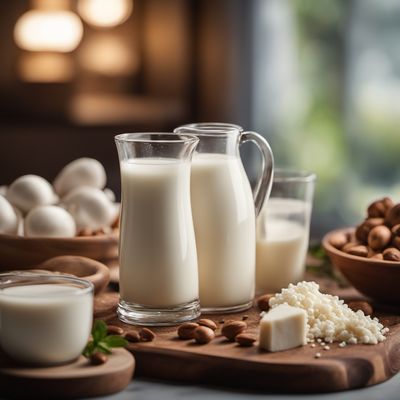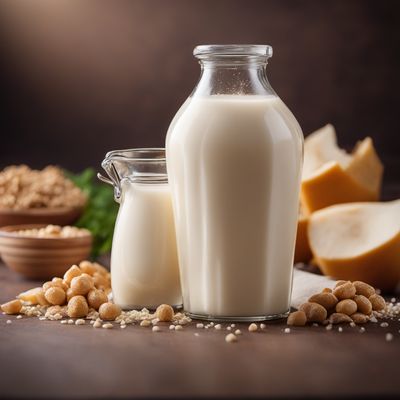
Ingredient
Cow milk
The Classic Dairy Staple: Cow Milk
Cow milk is a staple ingredient in countless culinary traditions, cherished for its rich and creamy texture, as well as its nutritional value. It serves as a foundation for a wide range of dairy products and is a versatile ingredient in both sweet and savory dishes.
Origins and history
The consumption of cow milk dates back thousands of years, with evidence of domesticated cows being milked as early as 9000 BC. Throughout history, cow milk has played a vital role in human nutrition, providing essential nutrients and sustenance. Today, it remains one of the most widely consumed types of milk worldwide.
Nutritional information
Cow milk is a nutrient-dense beverage, rich in calcium, protein, vitamins, and minerals. It is an excellent source of calcium, which is essential for strong bones and teeth. Cow milk also provides high-quality protein, making it a valuable component of a balanced diet.
Allergens
Cow milk may cause allergic reactions in individuals with lactose intolerance or milk protein allergies. It is important to note that lactose-free or plant-based milk alternatives are available for those who cannot consume cow milk.
How to select
When selecting cow milk, choose varieties that are pasteurized and have a fresh, clean scent. Check the expiration date to ensure freshness. Opt for organic or grass-fed milk if desired.
Storage recommendations
To maintain the freshness and quality of cow milk, it should be stored in the refrigerator at a temperature below 40°F (4°C). Keep it tightly sealed to prevent absorption of odors from other foods. Consume within the recommended expiration date for optimal taste and safety.
Preparation tips
Cow milk can be consumed as a standalone beverage, used in cooking and baking, or transformed into various dairy products such as cheese, yogurt, butter, and cream. It is a versatile ingredient in both sweet and savory dishes, adding richness and depth of flavor.
Substitutions
Plant-based milk alternatives such as almond milk, soy milk, or oat milk can be used as substitutes for cow milk in many recipes. However, the flavor and texture may differ.
Culinary uses
Cow milk is a fundamental ingredient in numerous culinary traditions around the world. It is used in a wide range of dishes, including soups, sauces, desserts, and beverages. It is also a popular choice for making homemade ice cream and cheese.
Availability
Cow milk is widely available in grocery stores, supermarkets, and dairy farms worldwide.



